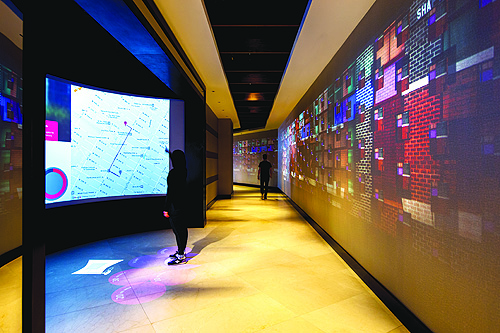Audiovisual Experiences Make Hospitality More Memorable
Posted on Oct 2, 2017
By David Kepron, Vice President - Global Design Strategies – Distinctive Premium Brands, Marriott International Marriott International has 31 distinctive brands that share a commitment “To Be The World’s Favorite Travel Company.” When bringing our brand experiences to life, digital content and audiovisual experiences play a significant role from design to customer engagement.
Marriott International has 31 distinctive brands that share a commitment “To Be The World’s Favorite Travel Company.” When bringing our brand experiences to life, digital content and audiovisual experiences play a significant role from design to customer engagement.The customer journey starts long before the welcome smile by a doorman or associate at check-in. Customer engagement starts with a digital connection through an Internet search scanning destinations, property photos and opportunities for excursions. When guests arrive on property, their journey has already been well under way. From arrival to check-in, a ride in an elevator, to the guestroom and back, we consider signature brand momments and how to engage guests each step along the way. And we ask, where are digital and audiovisual experiences appropriate?
Architecture, design, materials, finishes and furniture make up the physical environment. The digital pieces and the audiovisual overlay must be integrated into the overall design thinking. It is an intricate dance between the brand’s expression in the physical environment and how interac¬tive digital media plays a role in enhancing experiences. At one point, mobile check-in may be the tool. At another location, it may be large-scale digital projections.
 No two properties may be the same in how they engage the senses, trigger emotion and foster lasting positive memories. What is consistent is the question of whether or not the introduction of digital content improves the guest experience?
No two properties may be the same in how they engage the senses, trigger emotion and foster lasting positive memories. What is consistent is the question of whether or not the introduction of digital content improves the guest experience? A good example is Renaissance, where the brand strategy and design foundation require digital interactivity on projected surfaces, using audiovisual content to enliven public spaces.
If you go to the Renaissance Hotel in Mid¬town Manhattan, you encounter a projected digital experience in the elevator corridor, where projected graphics are motion-re-active. As you walk through the lobby, wall content modulates to your movement. It’s very subtle, but it becomes something that you naturally start to play with.
Farther down the corridor, there is a virtual concierge, where you stand and point to the wall at what you’re interested in. Sensors respond to your arm motion, activating additional content and helping you deter¬mine where you can go for dinner within a five-minute walk, or where you can go shopping or have a cultural experience.
In the lobby, the digital projections continue, as environmental art and graphics. You don’t directly interact with them, but they augment the environment, providing a digital tapestry with scenes of New York. They introduce intrigue and a sense of mystery that capture your attention.
Marriott continues to study audiovisual experiences such as digitally immersive environments, the Internet of Things, adaptive interfaces and the neuroscience of customer engagement in a digital world. The influence of a digitally mediated culture on an emerging generation of guests will result in vastly different expectations about their relationships with the brands they love. Providing digitally immersive audiovisual environments can engage and empower guests in making hotels stays memorable.
AVIXA, the Audiovisual and Integrated Experience Association, is helping retail designers create a more successful future through the integration of compelling audiovisual experiences. AVIXA represents the $178 billion global commercial AV industry and produces InfoComm trade shows around the world.





